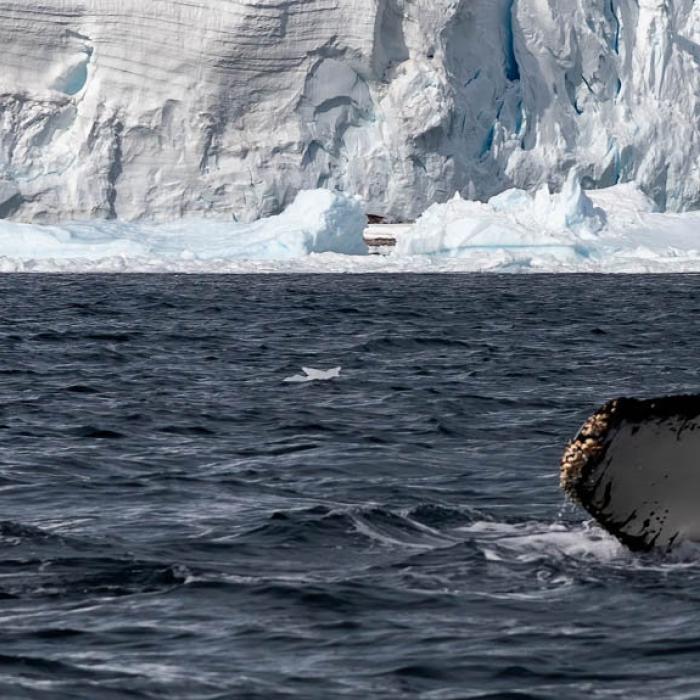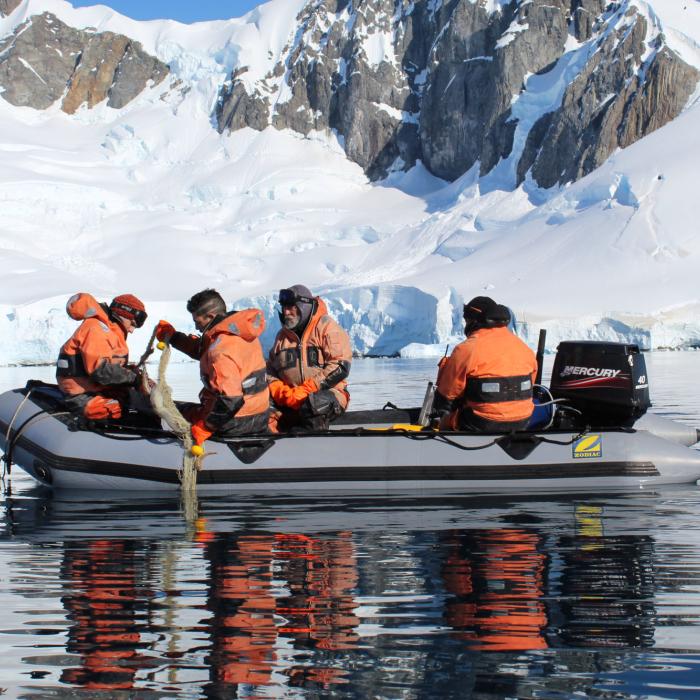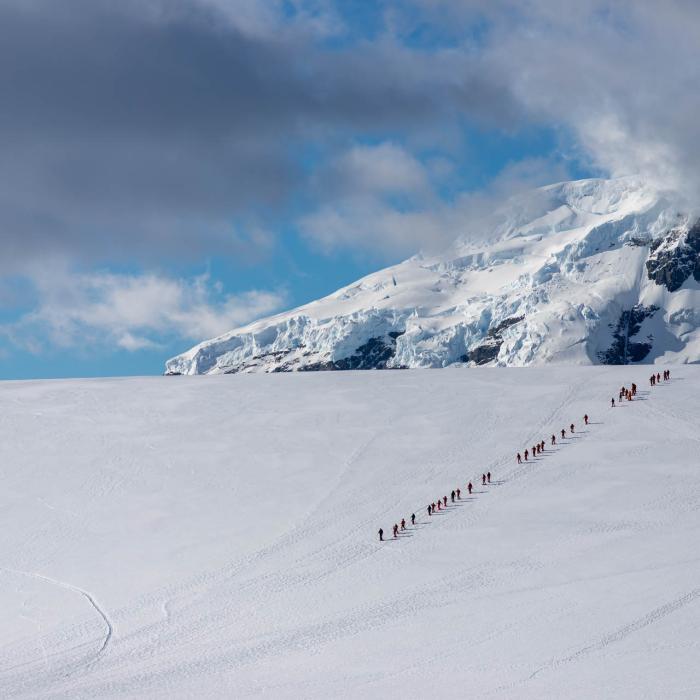
Antarctic Ambassadorship - The Whys, Whats and Wherefores
For centuries scientists, adventurers and the enthralled public have listened to the call of the White Continent.
Antarctica easily captures our attention and lures us in. For some it means reading a book about Amundsen and Scott or watching documentaries about penguins and whales, for others it might mean attending a local talk by someone who has visited or maybe visiting the continent themselves. In whatever way you interact with Antarctica, showing interest and care for the region is a good place to start as an Antarctic Ambassador.
The International Association of Antarctica Tour Operators (IAATO) believes that by leading responsible expeditions to Antarctica, guests each season return from the white continent with a greater understanding of its environment, its value to global science and how changes to the region can impact us all. It was with this in mind we created the Antarctic Ambassadors project.
An Antarctic Ambassador, is anyone who:
Loves and respects the region,
Educates others by sharing their Antarctic experiences,
Advocates for Antarctica when opportunities arise, and
Protects the region by making positive changes at home.
LEAP is not only a handy acronym, but also the action we find returning visitors and other Antarctic enthusiasts take –leaping into ambassadorship and from passion to action for Antarctica.
But what does that mean in practice?
Love and respect the region. If you have traveled to Antarctica, there is a high chance you have returned home with a love for the region. But what does it mean to respect the region? Respect can come in many forms, but one way is to remember how Antarctica is not isolated and the actions we take at home can (and do) have an impact on it. 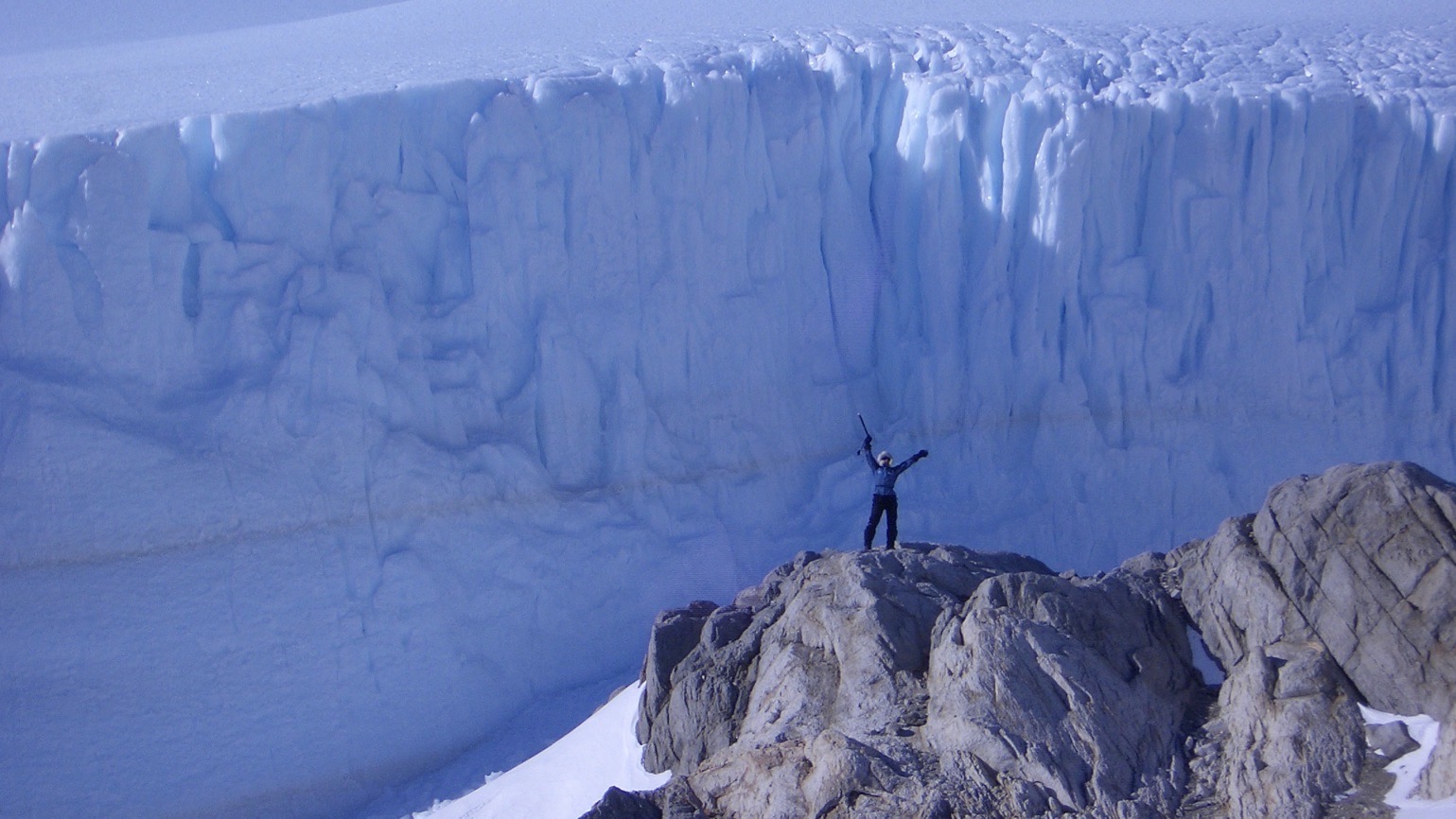 Educate others by sharing your Antarctica Experience. When you get back from an expedition, inevitably you will share your best photos of the South, from icebergs and glaciers to penguins and whales - with friends and family. But rather than stop at your incredible images, why not share your story…
Educate others by sharing your Antarctica Experience. When you get back from an expedition, inevitably you will share your best photos of the South, from icebergs and glaciers to penguins and whales - with friends and family. But rather than stop at your incredible images, why not share your story…
Did you participate in any science onboard? Can you share the science? When you share your iceberg photos, perhaps explain what you learned about how climate change is impacting Antarctica? Did you manage to capture a photo of you washing your boots or vacuuming your backpack? Most have never thought about invasive species before their trip to Antarctica – share the photo of your penguin poop-filled boot tread and explain the risk of non-native species.  Advocate for Antarctica when the opportunities arise. When you get home, you might find lots of people are interested, and have questions about, your experiences . You might get invited to give a presentation at your local library or write an article in your local newspaper. This is a great opportunity to expand the number of people you can reach. It’s a chance to share the wonders of Antarctica and what you have learned from your first-hand experience. As you describe the feeling of the icy spray hitting your face as you take a small boat to shore, include how Antarctica fits into the global climate change conversation. Can you get your audience excited about the science as well? Even if no one approaches you, can you make your own opportunities to share and advocate? Do you have a child or grandchild? Can you give a presentation to their class or school? Your photos and stories are powerful mediums to share information with and inspire others; (expert tip – kids and adults alike love to hear about penguin poop and then segue into Antarctic food chains!)
Advocate for Antarctica when the opportunities arise. When you get home, you might find lots of people are interested, and have questions about, your experiences . You might get invited to give a presentation at your local library or write an article in your local newspaper. This is a great opportunity to expand the number of people you can reach. It’s a chance to share the wonders of Antarctica and what you have learned from your first-hand experience. As you describe the feeling of the icy spray hitting your face as you take a small boat to shore, include how Antarctica fits into the global climate change conversation. Can you get your audience excited about the science as well? Even if no one approaches you, can you make your own opportunities to share and advocate? Do you have a child or grandchild? Can you give a presentation to their class or school? Your photos and stories are powerful mediums to share information with and inspire others; (expert tip – kids and adults alike love to hear about penguin poop and then segue into Antarctic food chains!)
Protects the region by making positive changes at home. As we look at Antarctica as part of the whole global system, making small changes at home will contribute to its wellbeing. What can these small steps include? Could you bike to work or take public transport? Can you bring a reusable bag to the grocery store? Can you plant native plants in your yard? Small climate-positive actions at home can ultimately support Antarctica as well.  You can also participate in citizen science projects that help scientists gather data about Antarctica. As you share about Antarctica you can share these do at-home projects as well.
You can also participate in citizen science projects that help scientists gather data about Antarctica. As you share about Antarctica you can share these do at-home projects as well.
- Submit your whale photos from your trip to HappyWhale
- Help Scientists understand Penguin Populations by counting Penguins with Penguin Watch
- Help NASA scientists Identify Clouds with NASA Globe Cloud Gaze
- Help monitor Seal populations with Seal Watch
In addition to these projects, why not seek out citizen science projects near you, or river or beach clean ups. (Find a Citizen Science project near you with SciStarter) Participating not only supports science and the environment but might lead you to meet others who share your passion. Antarctic Ambassadors is a community after all, and with community we can make greater change.
About the Author | Laura Smith, Antarctic Ambassador, IAATO Education & Outreach Working Group 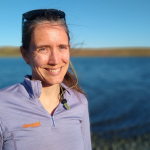 Hi, I’m Laura Smith! My first trip to Antarctica was on a small sailboat that my husband built. It was an incredible challenge – not only being in such a small boat (and crossing the Drake), but there is also so much to know and learn about Antarctica – How the Treaty system works, submitting permits, how to interact with wildlife, where to even anchor a boat to be able to sleep safely and soundly during the night. Our first trip lasted a bit over a month, and I guess you can say we caught the Antarctic bug.
Hi, I’m Laura Smith! My first trip to Antarctica was on a small sailboat that my husband built. It was an incredible challenge – not only being in such a small boat (and crossing the Drake), but there is also so much to know and learn about Antarctica – How the Treaty system works, submitting permits, how to interact with wildlife, where to even anchor a boat to be able to sleep safely and soundly during the night. Our first trip lasted a bit over a month, and I guess you can say we caught the Antarctic bug.
After that first trip, we decided to stay and live in Ushuaia (on our sailboat) and from there things grew. The next thing we knew we had purchased a bigger sailboat to take other people to Antarctica to also experience the amazing white continent and thus we started our own business.
With my own background in geology, we have always, since our first trip, done science while onboard. I wanted to feel like I was giving back to Antarctica as well as absorbing what it has to offer. On our first trip we were collecting samples of water for microplastics and since then we have taken 1 or 2 scientists south on our vessels to help them collect data.
I am also now a part of the Polar Citizen Science Collective, where we help bring scientists, guides, and operators together to do citizen science in the Polar regions.
It’s amazing what started out as one trip on our sailboat, has evolved into a full devotion to Antarctica!
